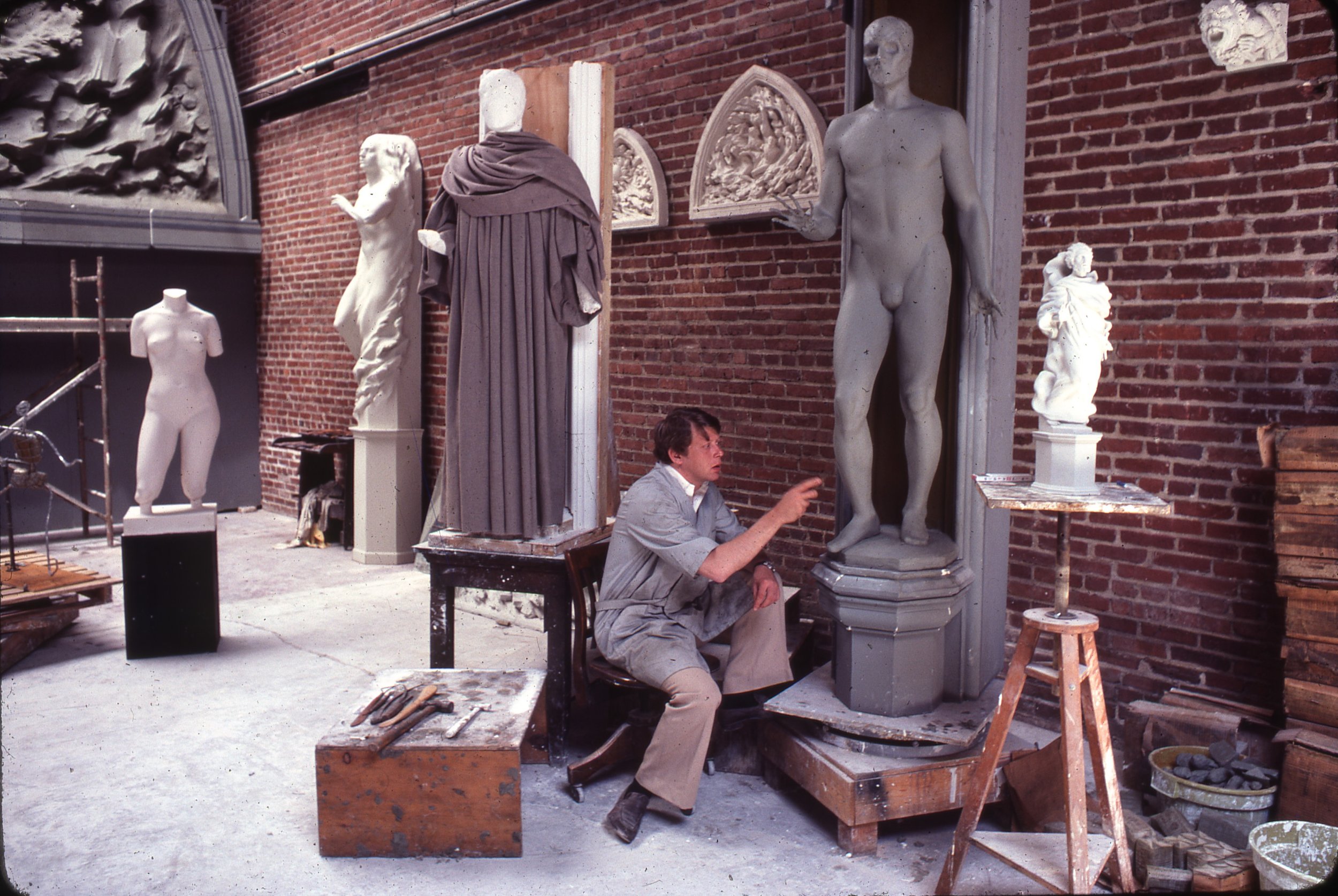FREDERICK E. HART
Sculptor
1943 - 1999
Frederick E. Hart grew up in a small town in South Carolina. When two hundred African American students organized a demonstration against racial segregation, Hart was the only white student to join them. As a result, he was thrown in jail, expelled from school, and chased out of town by the Ku Klux Klan.
In 1984 Hart unveiled a bronze sculpture of three servicemen at the Vietnam Veterans Memorial, the first representation of an African-American on the National Mall, and the first and only representation of an immigrant from Mexico on the National Mall.
Apprentice, Journeyman, Sculptor
Hart landed in Washington, D.C., and found work as an apprentice stone carver at Washington National Cathedral, where he honed his craft, practicing the techniques he would rely on throughout his career.
After he was commissioned to create an important series of sculptures, the Creation Sculptures, which took him over ten years to complete, Hart created and donated sculpture to benefit the Design Industries Foundation Fighting AIDS (DIFFA) and Operation Smile International.
In 1995 Frederick Hart created and donated a portrait of Ruby Middleton Forsythe honoring the African American educator who taught in a one-room schoolhouse near Hart’s family home in South Carolina.
During the last years of his life Hart mentored Mikael F. Sogoian, a sculptor who would go on to become an accomplished artist in his own right. He credited Hart as a wonderful teacher and “a brilliant philosopher.”
Hart’s life-size portrait of former President Jimmy Carter unveiled in Atlanta in 1994.
An Enriching, Ennobling, and Vital Partner
In recognition of “his important body of work — including the Washington National Cathedral’s Creation Sculptures and the Vietnam Veterans Memorial’s Three Soldiers — which heralded a new age for contemporary public art,” Hart was posthumously awarded the National Medal of Arts.
Although he died in 1999, Hart would be glad to see so much of his life’s work proliferating across the country, and across the world, increasingly available to the public in parks and museums where anyone can enjoy it. As he said, “Art must be a part of life. It must exist in the domain of the common man. It must be an enriching, ennobling, and vital partner... It should be a majestic presence in everyday life.”





